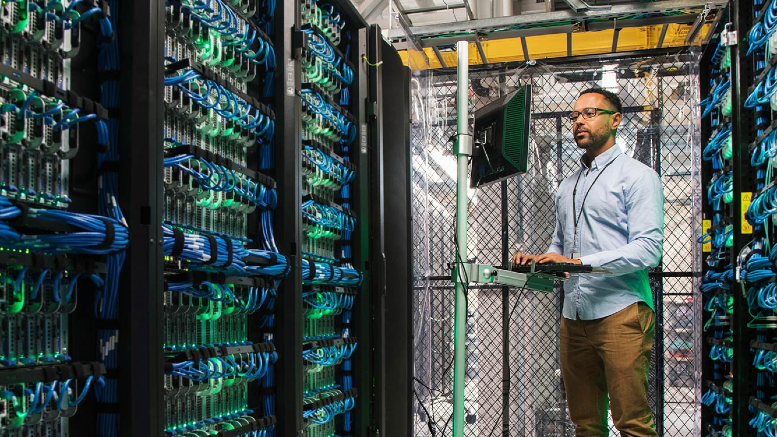
Short on time? Read the key takeaways:
- The shift from on-premises IT support to impersonal digital-only IT services has eroded the connection between employees and IT.
- Create human-centered IT experiences by giving IT experts the tools and enablement they need to focus on individual employees. Consider a move back to an on-premises support model with field services and virtual tech cafés.
- Use AI as a tool to augment the skill and free the time of your IT experts. Don’t use AI to replace human IT experiences.
- Maximize the impact of your technology investments with IT experts prepared to meet the unique needs of the employees using those technologies every day.
Innovative new technologies are supposed to change the world – or, at least, improve the way people work. Yet, for many businesses, the promises of digital transformation have fallen short of expectations.
"We're suffering today from the failed promise of IT." That's the provocative claim Joel Raper, SVP & GM for Digital Workplace Solutions at Unisys, made on a recent episode of the Digital Workplace Deep Dive podcast. But as Joel explains to host Weston Morris, he's not suggesting we abandon IT. Instead, it's time to rethink IT to finally deliver on its original promise of improving employee productivity and experiences. These strategies can help your business give IT a reality check and unlock your technology’s full potential.
Giving IT a reality check
For new members of the workforce, IT is simply where you go when your laptop stops working. Or, more likely, who you call. The latest generation of workers is likely unaware that IT’s role was once much larger. IT leaders had a greater say, and IT experts were available on site.
That’s not to say that the “good old days” of IT are gone forever. It’s time to make IT relevant again. As discussed during the podcast, IT can still influence the future of business. Raper says IT leaders are responsible for eliminating the technology hurdles that spike burnout and plummet productivity. Guided by his insights, we’ll examine how personalized IT experiences create genuine connections with employees, boosting workforce satisfaction and business outcomes.
The return of field services
At a time when most businesses are slashing on-site IT support, there couldn’t be a greater imperative to keep those field services intact. After all, with more businesses pushing for a return to the office, employees will look for reasons to show up. It’s bad news if your employees still have to call an outsourced IT center for support while in the office.
Doubling down on physical in-person support shows a company’s commitment to the employee experience. Field services, virtual tech cafés and dedicated help desks can help your employee experience stand out as more and more employers provide IT services that are less and less human.
Of course, there’s a time and place for self-service tools. They can give employees greater control over their technology and empower people to seek support in the ways that work best for them. However, only human experts can provide high-touch guidance to optimize each employee’s digital workspace for their unique needs and working style.
Human experiences should be at the heart of IT. Just because IT’s focus is on technology, that doesn’t mean support experiences should be robotic or impersonal.
AI that drives ROI
AI is a powerful complement to an employee-centric IT approach. It’s not a replacement for IT experts. Consider chatbots, automated workflow tools and predictive analytics software as tools to expedite common IT requests and find simple solutions. But remember: AI can’t provide the kind of human connection and empathy employees need when they’re overwhelmed by the technology problems that keep them from doing their jobs.
The true value of AI lies in augmenting human expertise, enabling your IT experts to focus more on complex, high-impact challenges.
You can strategically implement AI to automate repetitive tasks within IT. AI can capture data-driven insights about hardware and software use, helping IT and the business make strategic decisions about your technology landscape.
Quickly scaling the size of IT teams with the support of AI frees experts to prioritize areas AI simply can’t handle. This includes troubleshooting specialized hardware issues, facilitating technology transitions and providing the creative and empathetic problem-solving that today’s employees expect.
The path to resilient, future-proof IT
Companies increasingly view technology as a strategic asset but tend to forget IT’s role in ensuring that technology delivers on its promised value. Is your IT organization prepared to evolve alongside your changing technology landscape?
Rigid, reactive IT functions are at odds with providing modern businesses with the agility, innovation and growth they need to stay competitive. Instead, IT leaders should build resilient, proactive models that blend human ingenuity and AI capabilities.
This means prioritizing seamless omnichannel IT experiences that meet employees wherever they are, with human experts and AI tools working together. It means shifting away from passive support to continuously optimizing each user's unique technology environment. It means equipping IT teams with upskilling and AI enablement that empowers them to focus on improving employee experiences.
A deliberate IT strategy empowers your business to take full advantage of the technology solutions in which it’s invested time and money. Suppose user adoption of your expensive new software solutions or smart hardware devices has been lackluster. Then, it might be because employees don’t have the support they need to use these technologies effectively.
For many businesses, IT acts like a bottleneck instead of what it should be: a powerful business accelerator. It’s up to IT leaders to change that. You can build an IT model that sparks productivity and boosts satisfaction – for both IT experts and the employees who depend on their support.
To discover how to make that happen, hear more of Joel’s insights from his guest appearance on The Digital Workplace Deep Dive podcast.
To learn how Unisys can enhance your organization’s digital workplace services, visit online or contact us today.




















